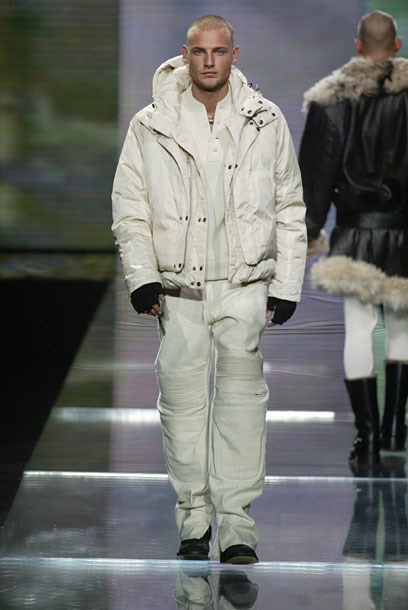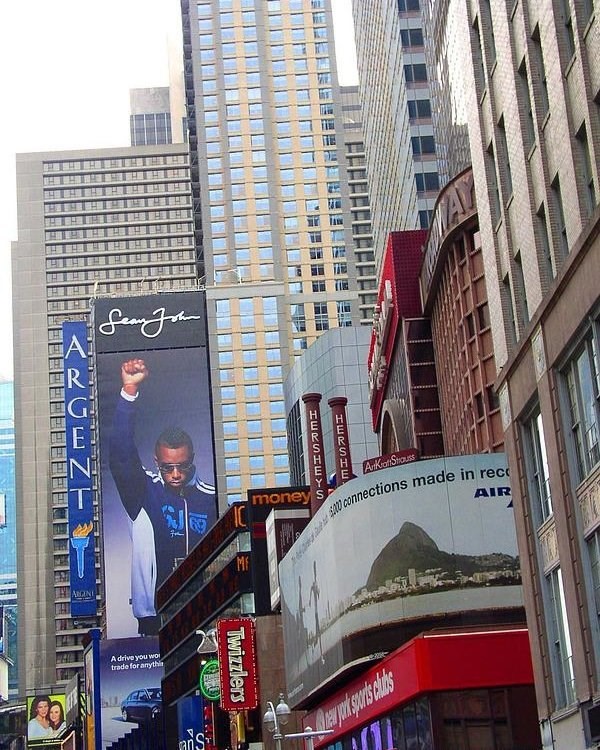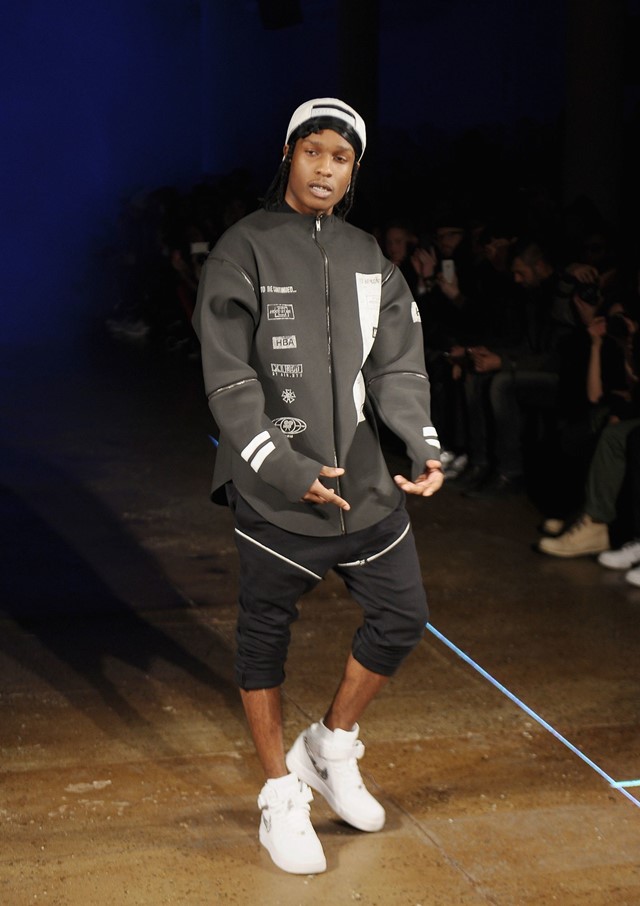For the third part of his series on hip hop style, Calum Gordon examines the history and legacy of Sean John
- TextCalum Gordon
Whether it’s Gucci and Louis Vuitton riffing on the work of Dapper Dan, or the contemporary streetwear labels building on the foundations of early pioneers like Stüssy and X-LARGE, hip hop’s influence on how we dress in undeniable, and fittingly, impactful. Each epoch of this subculture turned de facto pop culture has come with its own host of styles and labels. To chart each one – often specific to regions or neighbourhoods, or trends with limited lifespans – would be impossible. But some brands have left a lasting impact, either stylistically or on how we have come to view hip hop as a driving force within contemporary fashion. In The History of Hip Hop Style in Four Brands, which coincides with the A/W18 men’s shows, we look at those brands whose wares or influence continue to resonate.
There are several epochs of hip hop fashion which have been forgotten. Some deservingly so – like when Jay-Z wore dress shirts with jeans for a brief period. Other times, it’s simply because it’s hard to keep up. As a genre in which Cam’ron can turn everyone on to pink at the snap of a rose-hued flip phone, and Kanye can have everyone quickly searching for their nearest leather sweatpant stockist, certain eras can easily be slept on. Even Jacob the Jeweller, once consistently name-dropped in songs, has somewhat faded into obscurity (a stint in prison for money laundering didn’t help).
Similarly, nobody really remembers Sean John, the fashion brand of Sean “Diddy” Combs – at least not properly. Maybe that’s because the label continues to exist today, meaning that there has never really been what feels like a fitting point to truly asses Sean John’s impact. In its ubiquity (it’s still sold in Macy’s and racks up tens of millions in sales every year) and in the changing face of fashion (with a glut brands specialising in the kind of luxury-sportswear which Combs made the cornerstone of his brainchild), we have perhaps forgotten just how important Sean John was.

Launched in 1998, Sean John was one of several black-owned labels that emerged in the decade, aiming to capitalise on what was clumsily termed the “urban” market by many. There was also Fubu and Phat Farm, and in 1999 Jay Z and Dame Dash launched Rocawear. As touched on in the previous portion of this series, these labels were not necessarily a direct response to the likes of Tommy Hilfiger, Nautica and Ralph Lauren – white-owned businesses which, by way of the influence of hip hop, had found an enthusiastic new audience – but it’s hard to ignore that context.
In the 90s, with hip hop beginning to find a real mainstream footing, its influence on fashion was everywhere. Raekwon was walking for Tommy Hilfiger, Lil’ Kim was appearing front row at the Versus by Gianni Versace show, and Women’s Wear Daily coined the term “homeboy chic” in response to a Isaac Mizrahi collection, which saw Naomi Campbell, Cindy Crawford and Christy Turlington walk the runway in fat gold chains and nameplate belts. (Karl Lagerfeld called on a similar aesthetic for his A/W91 Chanel collection). And yet, rappers only really enjoyed a peripheral role – on the runway, in campaigns, or simply on the moodboards of designers’ – rather than a seat at the table.
Combs has never been one to lack ambition. He’s a Grammy-winning artist, but he’s never been the best rapper or best producer. He can, however, stake a claim to being one of rap’s best businessmen. Renowned for his drive and work-ethic, as well as having an incredible mind for marketing, when Combs launched Sean John it wasn’t to merely rival other black-owned labels, his sights were set on fashion’s vanguard. “In the Sean John store, on Fifth Avenue at 40th Street in Midtown, a salesman recently described the shoes, which resemble sneakers or lightweight hiking boots, as ‘something Louis Vuitton would do,’” wrote Tracie Rozhon in a 2005 New York Times article.

Such ambition to rival the likes of Vuitton coursed throughout the company in its early years. Millions were spent on runway shows, there were Times Square billboards which saw Combs himself in one of the brand’s signature tracksuits, clenched fist aloft evoking John Carlos and Tommie Smith at the 1968 Olympics. Tailoring, fragrances and womenswear also followed, again seeming like a conscious effort to distance itself from the “urban” tag. “Urban. I was always insulted by the word,” Combs would later tell the Washington Post. “I would get insulted when they put us into [that] classification, because they didn’t do that with other designers.”
By 2004, Sean John had an annual turnover in the region of $400 million, and Combs was awarded Menswear Designer of the Year by the Council of Fashion Designers of America – the first black designer to be awarded any of its main category awards in its 23-year history. “Sean John wasn’t meant to be about race,” wrote renowned fashion critic Robin Givan in 2016. “But in propelling the sensibility of a younger, city-centric generation forward, race entered the spotlight, too. Each time Combs spread his arms wide or pumped up his chest, he was trying to keep from being pushed into a box.”
That a label could produce both tailoring and velour tracksuits seemed bizarre back then, now it would seem bizarre if any major fashion house wasn’t trying to attract both of those consumers. Or even, recognise that they’re not necessarily different people. Indeed, the success of brands like Vetements, Balenciaga and Gucci in recent seasons has stemmed from this embrace of traditional high-low dynamics. Sean John, meanwhile, is largely forgotten about, now enjoying a place in American fashion’s mid-market and, more often than not, the wardrobes of middle America.

The brand’s legacy, however, lives on. Without those halcyon days, where Combs made a genuine fist of rivalling fashion’s recognised big names – dumbfounding many fashion critics and industry traditionalists in the process – it would be interesting to see where fashion would be today. Now, labels like Hood By Air, Telfar and Off-White are essential to the fashion zeitgeist. All of them are black-owned, all of them have drawn from hip hop, whether it’s HBA’s Shayne Oliver putting A$AP Rocky in his A/W13 show, or Telfar tapping Cam’ron to perform as part of his recent collaboration with fast-food chain White Castle. The designers of Public School NYC – and formerly of DKNY– Dao-Yi Chow and Maxwell Osborne, one Asian-American and one black, are also Sean John alumni.
Almost two decades on, no-one remembers quite how impactful Sean John was in its heyday. It trundles on, making money, but no longer pulling up trees like it once did. The path it cleared, however, is there for all to see.
Calum Gordon is a Berlin-based fashion writer and the co-author of Contemporary Menswear. His work has also appeared in Dazed, SSENSE, and Kaleidoscope.











